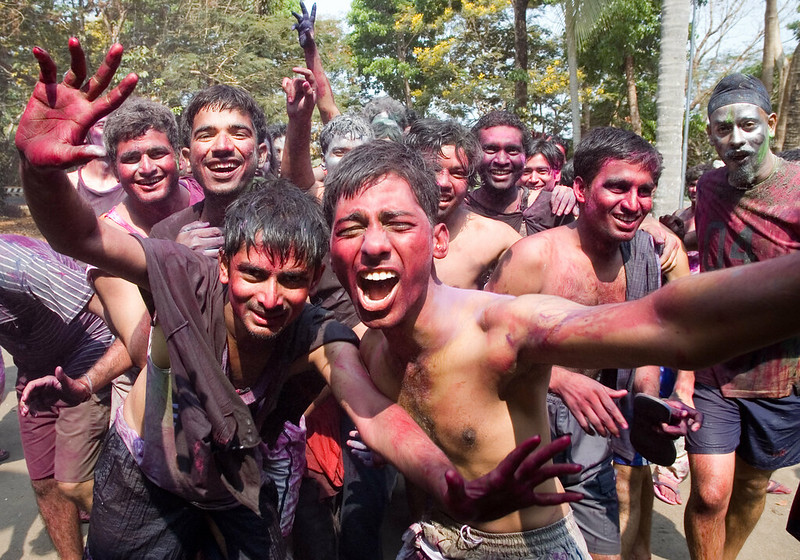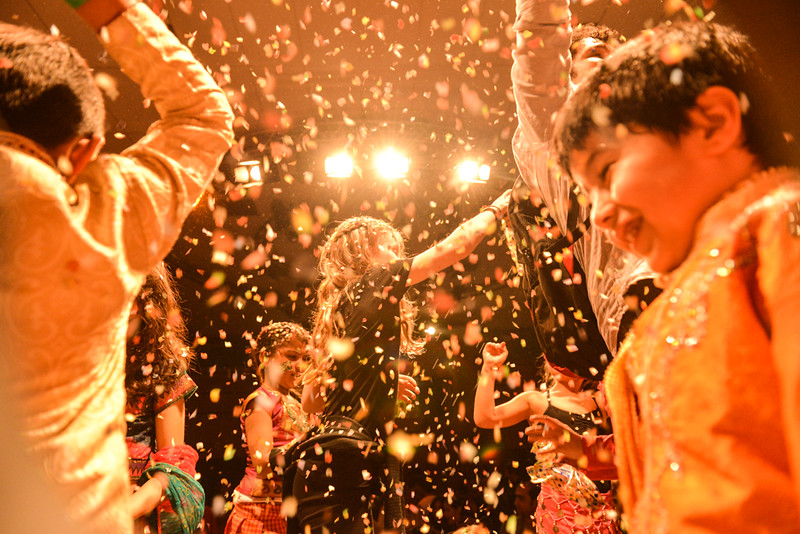Holi
India’s Spring Festival of Color and Joy
2026/03/02 - 2026/03/03
Holi is one of India’s largest and most colorful Hindu festivals, celebrating the arrival of spring and the triumph of good over evil.
Every spring, all of India is wrapped in a riot of color and laughter for “Holi.” For two days, city boulevards, rural lanes, and temple courtyards overflow with music, sweets, the scent of incense, and the joyful shouts of people playfully throwing colored powder (gulal) at each other. From the big cities of Delhi to the winding streets of Varanasi, Holi is a festival of love, renewal, and victory of good over evil that welcomes everyone-locals and visitors alike.
Holi is far more than just a party. The cool splash of colored water or powder on your skin, the taste of sweet gujiya and chilled thandai, the sight of white clothes transformed into rainbows, and the air filled with drums and laughter-it’s an open, unforgettable Indian experience that delights all five senses.
Main Attractions
Holika Dahan: The Bonfire of Purification
The night before Holi is marked by “Holika Dahan,” a bonfire ritual. Large fires are lit in town squares and village centers as people sing and dance around the flames, tossing in old items or symbolic offerings to burn away negativity and welcome new beginnings. This ritual is rooted in the legend of Prahlad and Holika, symbolizing the triumph of good over evil.
Rangwali Holi: The Day of Colors
With the morning, the real celebration begins. People take to the streets with gulal (colored powder), water guns, and balloons, playfully coloring friends and strangers alike. Drums and music fill the air as groups dance and sing, parading from house to house. In places like Mathura, Vrindavan, and Jaipur, Holi is especially wild and exuberant, but smiles and colors fill every corner of India.
Costumes and Decorations
The standard Holi attire is “white you don’t mind getting messy.” White kurtas, pajamas, or old clothes become instant canvases for color. Women often add bright scarves or dupattas, and everyone looks forward to getting covered in color. Homes and temples are decorated with marigolds, rangoli, banners, and balloons.
Traditional Food & Drink
Holi is a feast for the taste buds as well. Gujiya (deep-fried pastries filled with nuts and cardamom), malpua (syrupy pancakes), dahi bhalla (yogurt dumplings), puran poli, papri chaat, kachori, and more are served. Drinks like chilled thandai, flavored with rose, cardamom, and sometimes bhang (cannabis), are a Holi staple. Street snacks and festive treats make Holi a true culinary adventure.
Cultural and Historical Background
Holi’s origins are ancient, with references in Sanskrit texts like the Purva Mimamsa Sutra and Narada Purana, as well as the 7th-century play “Ratnavali” by King Harsha. It began as an agricultural ritual to celebrate spring’s arrival, a good harvest, and the renewal of nature-marking the end of winter and the start of a new season.
Religiously, Holi centers on the Hindu legend of Prahlad and Holika. The evil king Hiranyakashipu’s sister Holika tried to burn the devout boy Prahlad in a fire, but Prahlad survived by divine grace while Holika perished. This is commemorated by the Holika Dahan bonfire, symbolizing the victory of good over evil.
Another origin story is the playful color-throwing of Lord Krishna with the gopis (village girls), and his romance with Radha. In North India’s Mathura and Vrindavan, Holi is deeply tied to Krishna devotion and local traditions.
Holi has evolved into a festival of equality and reconciliation, where caste, status, gender, and age are set aside, and everyone celebrates together. It’s a day to forgive old grievances and start anew. Today, Holi is celebrated not only in India but also in Nepal and among Indian communities worldwide, spreading its message of color, joy, and hope across borders.
Participant Voices
“My first Holi in Jaipur was unforgettable. In the morning, I put on a plain white kurta and stepped outside, only to be greeted by strangers shouting ‘Happy Holi!’ as they gently smeared pink, yellow, and green powder on my cheeks and hair. The streets pulsed with drumbeats and Bollywood music, children and adults danced with joy, and colorful water balloons soared overhead. The sweetness of gujiya in my hand mixed with the scents of incense and flowers in the air. Before I knew it, I was covered head to toe in rainbow colors, taking photos arm-in-arm with people I’d just met. I’ve never felt so connected to others, regardless of language or nationality.”
Fun Facts
- Each color has meaning: red for love, blue for Krishna, green for new beginnings.
- Holi is a festival where caste and social barriers are joyfully forgotten-everyone is fair game for color!
Festival Dates
Holi is celebrated across India and in Indian communities worldwide, on the full moon of the Hindu month of Phalguna (February–March). For the ultimate experience, visit during Holi and immerse yourself in the colors, music, flavors, and smiles of India’s spring festival.
The event schedule is subject to change. Please check the official website for the most up-to-date information.
Media

photo by Tayseer ALHamad

photo by Dr Partha Sarathi Sahana

photo by Kiran Jonnalagadda

photo by Barbora Hrdá
Information
| Name | Holi |
| Country | India |
| Area | New Delhi |
| Date | 2026/03/02 - 2026/03/03 |
| Link |
Upcoming Festivals
Whirling Dervishes Festival Turkey
A Mesmerizing Dance of Divine Love
2025/12/06Mevlana Celaleddin Rumi Commemoration Ceremony ( Şeb-i Arus ) Turkey
A Whirling Journey to Divine Love
2025/12/10Dia de la Virgen de Guadalupe Mexico
A Festival Weaving Faith, Fervor, and Mexican Identity
2025/12/11L'Escalade Switzerland
Geneva’s Grand Winter Festival of Courage, Chocolate, and Community
2025/12/12Umkhosi Wokweshwama South Africa
The Zulu First Fruits Festival—A Sacred Celebration of Land, Ancestors, and Renewal
2025/12/12Lucia Festival (St. Lucia's Day) Sweden
A Festival of Light Illuminating the Nordic Darkness
2025/12/15Las Posadas Mexico
The Luminous Quest for Sacred Shelter
2025/12/22Noche de Rabanos (Night of the Radishes) Mexico
A celebration blending art, farming heritage, and cultural traditions
2025/12/23Chant of the Sybil on Majorca Spain
A Medieval Prophecy Echoes Through Majorcan Christmas
2025/12/23‘Hatajo de Negritos’ and the ‘Hatajo de Pallitas’ Peru
A Christmas Festival of Rhythm, Faith, and Afro-Andean Heritage in Peru’s Ica Region